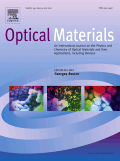
OPTICAL MATERIALS
Scope & Guideline
Illuminating the Future of Optical Materials
Introduction
Aims and Scopes
- Photonics and Optoelectronics:
Research on optical materials that enhance light manipulation and emission, including photonic crystals, quantum dots, and organic-inorganic hybrid materials. - Energy Conversion Materials:
Focus on materials for solar cells, light-emitting diodes (LEDs), and photodetectors, with a particular emphasis on perovskite materials and their hybrid forms. - Nanomaterials and Nanostructures:
Exploration of the optical properties of nanostructured materials and their applications in sensors, imaging, and information technology. - Nonlinear Optical Materials:
Investigation of materials that exhibit nonlinear optical effects for applications in lasers, frequency conversion, and optical signal processing. - Smart and Responsive Materials:
Development of materials that can respond to external stimuli (light, heat, electric fields) for applications in sensors, actuators, and information encryption. - Chiral and Circularly Polarized Materials:
Study of materials that exhibit chiroptical properties for applications in advanced photonic devices and secure communication systems.
Trending and Emerging
- Perovskite Materials:
Research on perovskite materials for solar cells and light-emitting devices is booming, focusing on improving stability, efficiency, and scalability. - 2D Materials and Heterostructures:
There is a growing trend towards the use of 2D materials (like graphene and transition metal dichalcogenides) in photonics and optoelectronics, enabling novel device architectures. - Metasurfaces and Metamaterials:
Emerging research on metasurfaces and metamaterials is gaining traction, aimed at achieving advanced light manipulation capabilities and novel optical functions. - Quantum Dot Technologies:
Interest in quantum dots for applications in display technologies and photodetectors is rapidly increasing, particularly for their tunable optical properties. - Smart and Responsive Optical Devices:
The development of smart materials that can change their optical properties in response to external stimuli is a key emerging area, with applications in sensors and displays. - Sustainable and Eco-Friendly Materials:
Research is trending towards the synthesis and application of eco-friendly materials, including lead-free perovskites and biodegradable polymers for optical applications.
Declining or Waning
- Traditional Optical Coatings:
Research on conventional optical coatings has decreased as newer, more versatile materials and methods (like metasurfaces) gain prominence. - Bulk Optical Materials:
The emphasis on bulk materials has waned in favor of nanostructured and hybrid materials that offer enhanced functionalities and efficiencies. - Passive Optical Devices:
There is a noticeable decline in research focused on purely passive optical devices as the field moves towards active, tunable, and programmable optical systems. - Single-Component Organic Materials:
The exploration of single-component organic materials for applications in optoelectronics is less prominent, with a shift towards hybrid systems that enhance performance. - Conventional Photodetectors:
Traditional photodetector technologies are being overshadowed by advances in 2D materials and heterostructures that provide superior performance and versatility.
Similar Journals
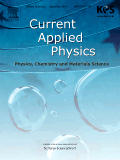
CURRENT APPLIED PHYSICS
Advancing the Frontiers of Applied Physics.Current Applied Physics is a leading journal published by Elsevier, specializing in the dynamic fields of Physics and Materials Science. With an ISSN of 1567-1739 and an E-ISSN of 1878-1675, this journal focuses on the latest advancements and applications of physics principles in various practical domains. Operating from the innovative hub of Amsterdam, Netherlands, Current Applied Physics occupies a significant niche in the scientific community, evidenced by its Q2 ranking in both the Physics and Astronomy and Materials Science categories for the year 2023, along with impressive Scopus rankings that highlight its relevance in the fields of General Physics and General Materials Science. The journal's scope encompasses a wide range of topics, fostering interdisciplinary collaboration and facilitating the exchange of knowledge among researchers, professionals, and students. Each issue features peer-reviewed articles that contribute to the understanding and application of physical sciences, making it an essential resource for those aiming to stay at the forefront of research and innovation in applied physics.

eLight
Fostering Innovation Through Cutting-Edge ResearcheLight is a leading academic journal published by SPRINGER NATURE, dedicated to the dynamic field of Atomic and Molecular Physics, as well as Electronic, Optical, and Magnetic Materials. Launched in 2021, the journal has quickly established itself as a reputable source of cutting-edge research, evidenced by its impressive Q1 quartile rankings in both categories for 2023, alongside remarkable Scopus rankings that place it in the top 2% of its fields. With a commitment to advancing knowledge and fostering innovation, eLight invites contributions from researchers, professionals, and students who are passionate about exploring new frontiers in these critical areas of study. Hitting a critical intersection of physics and materials science, the journal provides an open forum for the dissemination of experimental findings, theoretical studies, and application-based research, ensuring accessibility to vital discoveries that drive progress in technology and academia. Located in Singapore, eLight is poised to make significant contributions to the scientific community until at least 2024, and beyond.

APPLIED PHYSICS LETTERS
Fostering Collaboration in the World of Applied Physics.Applied Physics Letters, published by AIP Publishing, is a premier journal dedicated to the rapid dissemination of research in the dynamic field of applied physics. With an ISSN of 0003-6951 and an E-ISSN of 1077-3118, the journal has carved a niche for itself since its inception in 1962, serving as a vital forum for the exchange of innovative ideas and experimental findings. As of 2023, it proudly holds a Q1 ranking in the category of Physics and Astronomy (miscellaneous), standing at rank 11 out of 81 in Scopus, reflecting its influential role in advancing scientific knowledge with an impressive 87th percentile. The journal significantly contributes to the academic community by providing an accessible platform for both groundbreaking theoretical and applied research. Researchers and professionals alike benefit from its rigorous peer-review process and timely publication, fostering collaboration and dialogue among experts in the field. While the journal currently operates under a subscription model, its comprehensive scope encourages submissions covering all aspects of applied physics, making it an essential resource for researchers and students eager to stay at the forefront of this ever-evolving discipline.

Opto-Electronic Advances
Illuminating the Path of Innovative ResearchOpto-Electronic Advances is a premier open-access journal published by the Chinese Academy of Sciences' Institute of Optics & Electronics, dedicated to advancing the fields of optics and electronic engineering. Established in 2018, this journal quickly ascended to a Q1 ranking across multiple categories including Atomic and Molecular Physics, Electrical and Electronic Engineering, and Electronic, Optical and Magnetic Materials, showcasing its impact and relevance in the scientific community. With an impressive Scopus ranking placing it in the top percentiles for critical fields such as Engineering, Materials Science, and Physics, Opto-Electronic Advances provides a platform for researchers to publish their cutting-edge findings and foster dialogue in an increasingly interdisciplinary area of study. The journal emphasizes innovative research that contributes to practical applications and theoretical frameworks in its domain, making it an invaluable resource for academicians, industry practitioners, and students alike. Embrace the future of opto-electronic research with Opto-Electronic Advances, which has been fully open access since 2021, ensuring that knowledge is widely disseminated without barriers.

Journal of Nanophotonics
Bridging Science and Technology in NanophotonicsThe Journal of Nanophotonics, published by SPIE-SOC Photo-Optical Instrumentation Engineers, is an esteemed platform dedicated to advancing the field of nanotechnology through pioneering research in photonics. Since its inception in 2007, this journal has become instrumental in disseminating innovative findings and fostering collaborative discussions, especially in the domains of Condensed Matter Physics, Electronic, Optical and Magnetic Materials, and Nanoscience and Nanotechnology. Currently ranked within the Q3 category across these fields, it serves as a vital resource for academics, industry professionals, and students keen on exploring the multifaceted applications and implications of nanophotonic technologies. With its convergence set to continue until 2024, the journal offers a non-open-access model, ensuring rigorous peer-review standards and high-quality publications that contribute to the global body of knowledge.

APPLIED OPTICS
Illuminating the Future of OpticsApplied Optics, published by Optica Publishing Group, is a prestigious journal dedicated to the field of optics and photonics. With an ISSN of 1559-128X and an E-ISSN of 2155-3165, this journal serves as a critical platform for researchers, professionals, and students eager to disseminate innovative findings and advancements in applied optics. Established in 1962, it has maintained a significant presence in the academic community, currently holding a Q2 category ranking in various disciplines including Atomic and Molecular Physics, Electrical and Electronic Engineering, and Miscellaneous Engineering as per the 2023 metrics. The journal's reputation is underscored by its solid Scopus rankings, attesting to its influential research output. While not an open-access journal, it continues to offer vital insights and discussions on the latest research topics that are critical to the advancement of technologies in optics, ensuring accessibility to vital knowledge for those within the field.
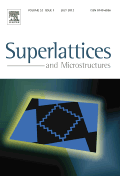
SUPERLATTICES AND MICROSTRUCTURES
Advancing the frontiers of materials science.SUPERLATTICES AND MICROSTRUCTURES is a premier journal dedicated to the exploration and dissemination of cutting-edge research in the fields of Condensed Matter Physics, Electrical and Electronic Engineering, and Materials Science. Published by Academic Press Ltd - Elsevier Science Ltd, this journal has established itself as an important platform for scholars and industry professionals to share their findings related to the design, fabrication, and application of superlattices and microstructured materials. With a commendable impact factor reflected in its rankings—positioned within the top quartile in Physics and Astronomy as well as Electrical and Electronic Engineering—it offers high visibility and influence in the academic community. The journal has covered significant contributions from 1985 to 2022, although access options have transitioned, making staying current essential for researchers and practitioners alike. This journal not only serves as a repository of knowledge but also fosters collaboration and innovation in materials science and related disciplines.
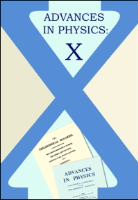
Advances in Physics-X
Connecting Ideas, Inspiring InnovationsAdvances in Physics-X is a premier open-access journal published by Taylor & Francis Ltd, dedicated to advancing the frontiers of knowledge in the field of Physics and Astronomy. Since its inception in 2016, the journal has established itself as a vital platform for researchers and professionals, showcasing innovative research and cutting-edge theories that influence a broad array of sub-disciplines within physics. With an impressive impact factor and ranked in the 94th percentile among its peers, it resides in the Q1 category for Physics and Astronomy (miscellaneous), indicating its significant contributions to the academic community. Located in the United Kingdom, the journal encourages open access to foster wider dissemination and visibility of scholarly works, aligning with contemporary academic trends that prioritize global knowledge sharing. The ongoing commitment to publishing high-quality research ensures that Advances in Physics-X remains an essential resource for students, industry experts, and academics alike, helping to shape the future of physics research through collaboration and innovation.

Journal of Luminescence
Shining a Light on Interdisciplinary DiscoveriesThe Journal of Luminescence, published by ELSEVIER, is a leading interdisciplinary journal focused on the exploration of luminescence phenomena and applications across various scientific fields. Established in 1970, this prestigious journal has made significant contributions to the realms of Atomic and Molecular Physics, Biochemistry, Biophysics, Chemistry, and Condensed Matter Physics, as evidenced by its commendable Scopus rankings and category quartiles. As of 2023, it holds a Q2 ranking in multiple categories, indicating a robust impact in the community. The journal serves as a vital platform for researchers, professionals, and students alike, offering insights into the latest advancements in luminescence research and related applications, fostering innovation in both theoretical and experimental frameworks. The journal provides enriching content through its non-open access model, ensuring high-quality peer-reviewed research is accessible to those who prioritize impactful scholarly work. With a convergence period extending to 2025, the Journal of Luminescence continues to be an essential resource for those dedicated to the advancement of knowledge in the luminous sciences.
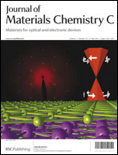
Journal of Materials Chemistry C
Connecting Innovators in Materials ChemistryJournal of Materials Chemistry C, published by the renowned Royal Society of Chemistry, is a leading academic journal focusing on innovative research in the field of materials chemistry. With an impressive impact factor, this journal has solidified its status as a top-tier publication within its field, ranking in the Q1 category for both Chemistry (miscellaneous) and Materials Chemistry as of 2023. Positioned at the forefront of -materials science, it serves as a vital platform for researchers, professionals, and students to disseminate findings that highlight the synthesis, characterization, and application of advanced materials. The journal's open access model allows for broader readership and engagement, ensuring that groundbreaking research is accessible to a global audience. As a result, the Journal of Materials Chemistry C plays a crucial role in advancing the understanding and technology of materials, fostering collaboration and innovation within this dynamic scientific community.